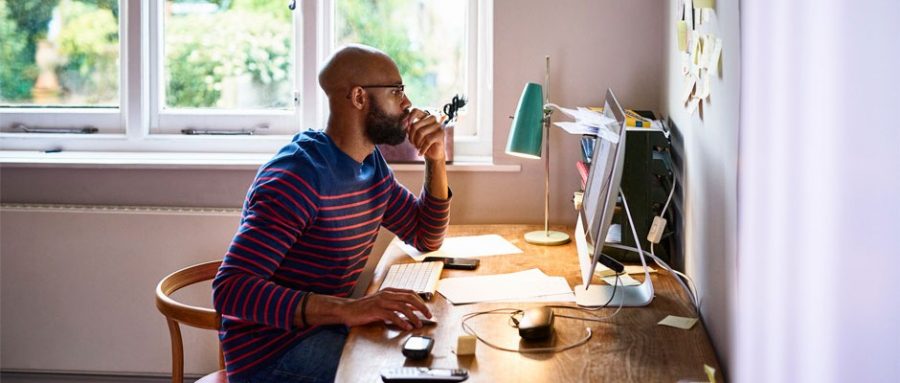by Angela Roberts, CEO, U.S. Money Reserve
After nearly two years of navigating the pandemic and staying safer at home, masking, social distancing, and finally getting vaccines, the world of work has changed. COVID-19 has changed everything from how we think about our human connections to the future of office design and travel—and it’s clear that the longer the pandemic stretches on, the more deeply embedded those changes are going to become.
As business and thought leaders, we need to come to terms with what has changed and what may remain the same. At the heart of this issue is the need to take care of staff while keeping the business running through these strange days. Here are the changes business leaders can expect to stick with us as we continue to define the new world of work.
Remote Work Has Become the Norm, and it’s What Workers Want.
Regardless of where you come down on the debate around remote work, the truth is that for most businesses both large and small, it has worked well. A working paper out of the Becker Friedman Institute shows that productivity among personnel and IT professionals rose by roughly 4.4%. Another recent survey, by Great Places to Work, shows that over the two years of the pandemic, the productivity of employees working at home increased by nearly 15%.
The physical and mental benefits of working from home can’t be denied, either. Working from home allows people to skip their commutes, which can be upwards of two hours or more in some major cities. It also allows them to find flexible working times, which in turn can make them more productive because they can choose to work when they work best. Remote work also tends to make more employees happy—and they are willing to take a pay cut to keep their work-from-home lives intact.
Nicholas Bloom is a Stanford professor who studies remote work, and he was recently quoted in a Recode story on the topic. He and his co-authors ran a survey focused on worker preferences and boss promises. They found that those who could work from home would likely continue to after the pandemic ended. While these workers won’t necessarily continue to be fully remote, the survey found that they will be out of the office around two to three days a week. That same survey also discovered that workers are willing to sacrifice a little bit of pay for the opportunity to work remotely. Bloom found that employees are willing to take as much as an 8% pay cut to continue to work remotely for two to three days a week.
In addition to the benefits that workers get from working remotely, companies also get benefits: less expensive office space, a more flexible workforce, and healthier employees. Workspaces can become smaller to accommodate a more flexible workforce, which can translate to huge savings for businesses looking to cut costs and downsize physical office space. Remote work will also continue to help keep those who are most vulnerable safe from contracting the coronavirus.
Offices Are Going to Change.
The physical space we once occupied to do our work will shrink in many ways thanks to the ongoing pandemic. Many companies are downsizing their office space to accommodate fewer in-office workers, and they’re rethinking who’s in the office and why thanks to cleaning requirements and social distancing.
Work that happens in the office will likely shift to focus more on creative and challenging tasks that really require people to be in the same physical space as one another. Most other tasks will be done remotely or via video conferencing. In addition, the design of offices will shift, moving toward a more collaborative environment and desk-sharing style of work. That means cleaning protocols and time management systems will need to adapt to manage who is in the office when and help provide some sense of safety in case of needed contact tracing should someone fall ill.
There will also be more demand for shared spaces, like hot desks or workrooms where employees can collaborate safely together. Gone are the days of having a designated desk space for each of your employees.
Business Travel Will Be Far Less Frequent.
We’ve all learned during the pandemic that most of our work and meetings can be held via Zoom, Microsoft Teams, or Google Meet. There’s much less need for the constant crisscrossing of the country or the world to have an hour-long meeting with executives or managers. It’s incredibly cost-effective and considerably more green to fire up a computer than it is to spend 12 hours traveling via airplane and car to make a meeting.
All of this means that business travel will be far less frequent in the future. The barriers to taking a business trip will also be much higher going forward, and trips will likely be a bit longer to maximize the time someone can spend at a destination before returning to the home office.
There Will Be More Freelancers.
Freelancing, whether it’s for tech or content creation or other specialties, will become the norm as we continue to navigate the pandemic. The outbreak of COVID-19 truly reinforced the idea that companies need to be agile and flexible with both their workforces and their workspaces. Companies hoping to become more agile in this changing business environment are likely to look to contractors to fill some of their more seasonal or temporary roles, which means you should expect that freelancers will be in higher demand. Since most of the workforce will be largely remote anyway, there’s not as much of a barrier to adding freelancers to the mix.
Culture Will Be More Difficult to Create.
If your company has always relied on free lunches, exercise classes, and happy hours to build culture, the global pandemic has put a real crimp in your style. That’s because it’s just not safe or responsible to do these things at this point in time, and while these kind of activities may come back when we finally get COVID-19 under control, it’s essential to recognize that it’s probably time to rethink how we build and maintain company culture.
While culture is a difficult thing to quantify and create, it can be done in this new hybrid work world. I’ve written a lot about the importance of creating a cohesive, open, honest, and direct rapport with employees. That builds a fantastic organization and helps encourage diversity in ways that cannot be replaced. The challenge of the pandemic will be to figure out how to break down walls between groups of employees and encourage safe interactions between groups of people in ways that will help support and build a different culture.
Perks Will Change to Hang on to the Best Employees.
Employees are going to demand more flexibility and support as we all navigate this new world of pandemic work. Keeping stellar employees is going to require more specialized and targeted perks that make sense in this flexible and remote world.
This means HR managers will need to focus more on things employees will use outside the office. Everything from mental health support to free online exercise memberships could become very valuable to full-time employees. Remote work is no longer an option—it’s a necessity. Companies that don’t offer remote work options will see a significant brain drain as valuable employees seek employment at other companies that meet their needs.
In addition, companies will need to consider offering stipends or reimbursement for employees who need to invest in home-office equipment and technology. While remote work could pose some challenges for IT departments, these aren’t insurmountable. With a little bit of creative thinking and solutions, a remote work option could be a real boon for a company.
How to Move Forward in the New World of Work
Through adversity comes growth, and the COVID-19 pandemic has caused numerous challenges for businesses both large and small. Thus, the question remains: How should we, as business leaders, adapt to this new world of work? What has changed, and how do we need to tackle these changes to ensure that our people and our businesses continue to exist? As we all continue to navigate this new world, it’s important to understand that the changes we may have initially thought were only going to last a month or so are going to become a deeply ingrained part of the world of work going forward. How leaders choose to manage these basic shifts will determine the success or failure of businesses in the future.


